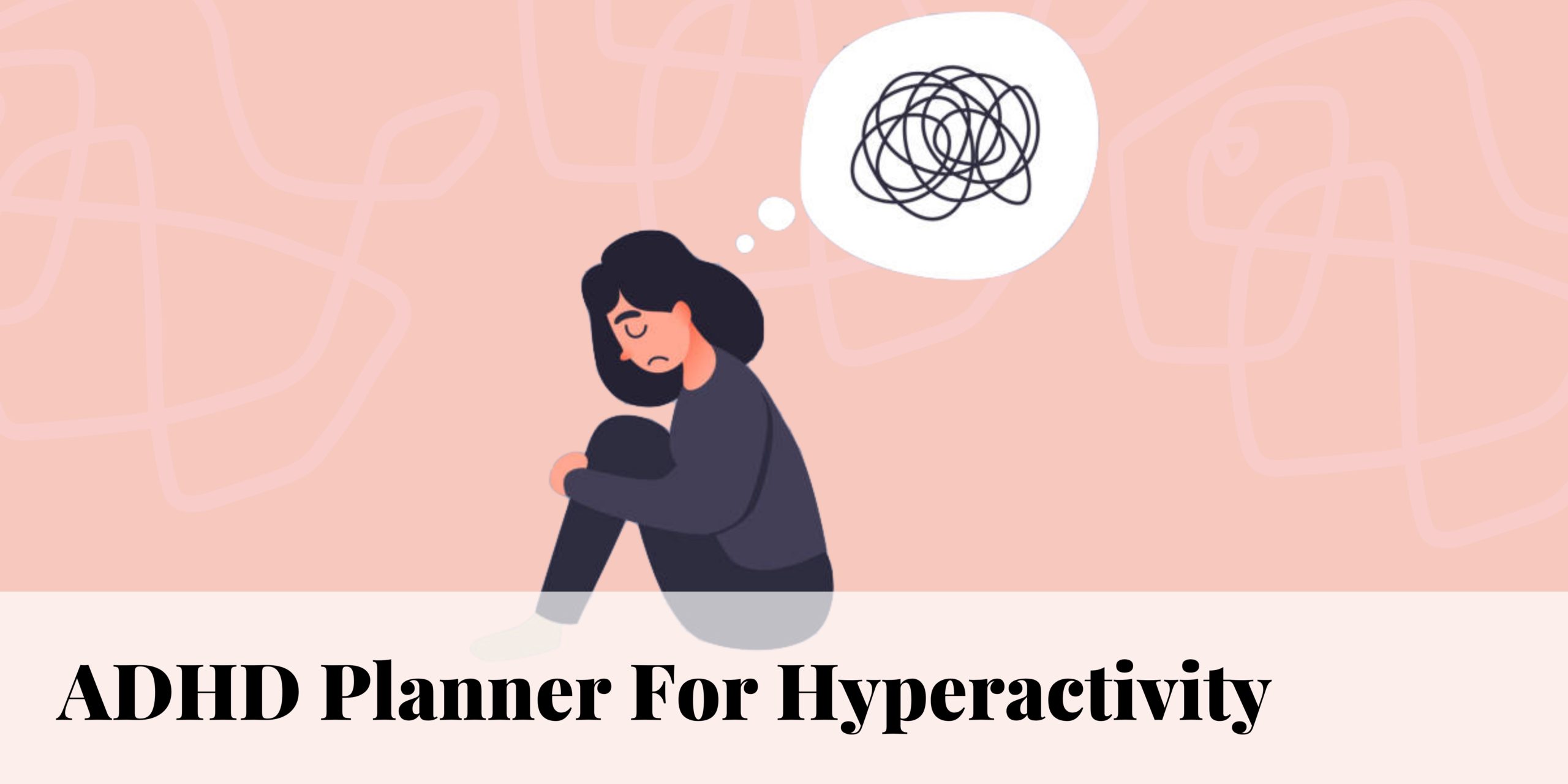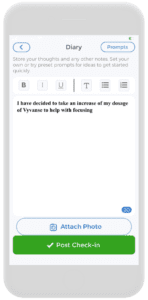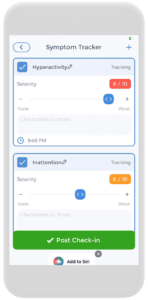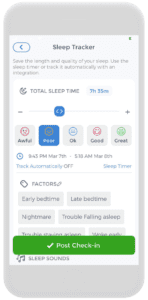
ADHD is a neuropsychological complication where the patient shows a spectrum of cognitive symptoms. In most cases, individuals find it hard to be attentive to things that require sheer focus. The other major behavioral symptom observed in such children or adults is the inability to patiently sit and do nothing. However, on occasion, healthy individuals and kids might have problems concentrating or being patient. That does not mean they are dealing with brain-related issues. That is why it is critical to leverage an ADHD planner to assist in developing day-to-day structure and assist with their well-being.
What does ADHD Stand For?
Many of you might already know the full form of this abbreviation. However, we will still spell it out for you before shedding some more light on it. ADHD means Attention-deficit/Hyperactivity disorder. It is a broad-spectrum name that covers a variety of ADHD symptoms. All the patients do not have all of the symptoms. Hence, it has been classified into three main categories namely: ADHD Combined, Hyperactive ADHD, and ADHD Distracted. Let us look into a little more detail about these three types.
- ADHD Combined – When a child or an adult is considered to be suffering from a combined disorder when they show both hyper maniac behaviors. Additionally, they also show an inability to focus on tasks.
- Hyperactive ADHD – This is when a patient appears to be solely excitable without any apparent signs of inattentiveness
- ADHD Distracted – This is when the patient gets easily distracted and cannot focus on priority tasks
Let us look into a little more detail about these three types. Clogging sinus passageways behind the eyes, nose, cheeks, and forehead trigger sinus headaches. You may notice this on one or both sides of your head. Sinus headaches are most common during allergy season. The sinuses can also be stimulated by something external. Although both types of headaches have similarities, they differ in intensity from one another. The unique symptoms associated with migraines are some of the primary symptoms that differ from other headaches. Other forms of headaches don’t typically have these symptoms. Nausea, vomiting, light sensitivity, and sound sensitivity are among some of the distinctive symptoms.
Table of Contents
- What are the Complications of ADHD?
- Diary Tracking with an ADHD Planner
- Lesser-Known Indications of ADHD
- Conditions Related to ADHD
- Mood & Attention Tracking with ADHD
- How can ADHD be Diagnosed?
- How to Manage ADHD
- Leveraging an ADHD Smart Planner to Manage Hyperactivity
- Reducing Analysis Paralysis with ADHD
- Solutions for Managing ADHD
What are the Complications of ADHD?
Certain loud and clear indications can confirm the diagnosis of the complex disorder by an ADHD specialist. These are generalized signs which cannot necessarily categorize the disorder into one of the three types.
- Fiddling – The person constantly twiddles something or moves something in their hands without any purpose. This is a definite sign that they cannot sit still.
- Concentration Issues – This is one of the most conclusive signs that conform to behavioral complications. Individuals have trouble focusing hard on one task for too long. They will get agitated when made to be attentive to something. It is more obvious in teenagers or younger age groups. Young adults face issues concentrating in class and finishing homework.
- Doing Unimportant Tasks First – This class of individuals has trouble going through focus-demanding tasks. The uncertainty of the time-consuming tasks feels daunting to them. They compensate for the feeling of accomplishment by finishing lesser priority and more predictable tasks.
- Impatience – This symptom is an extension of fiddling. Adults and children get annoyed and restless while waiting. They get impatient while either waiting in the queue or for their turn in the game.
Diary Tracking with an ADHD Planner

Most ADHD patients say they can better map their daily lives by them writing down the key points in paper planners. Journaling aids individuals to navigate better through their emotions, recording them in one place and work through them to achieve emotional stability. The Diary feature of the CareClinic app could work as a digital journal for users with hyper-functional behaviors replacing paper planners.
To get started, choose from various prompts in the diary to guide you through the journaling process. Use the ADHD diary to note key points on the patient’s Behavioral therapy and reflect on them later. To access this personalized ADHD planner, open the app, go to the check-in, and click on ‘Diary Entry.’
Another great use for the diary is to write down any symptoms, differing meal timings etc. You can also keep track of your mental health by writing out your thoughts associated with food. Additionally, you can log specific meals and how they affect your thoughts about eating. If you’re unsure of what to write, use the prompt function. The premium account has access to 16 journal prompts, and each prompt focuses on different aspects of mental health.
ADHD Planner Journal Prompts
Topics range from “acceptance” to “productivity planner daily.” With the CareClinic App, you can also add lists, bold, italicize, and underline important statements. You can change the color of the text to highlight your mood. Finally, you can add photos to personalize your diary. The best part? You can add as many entries as you want in one day and see the resultant charts and logs with correlations if you happen to also be tracking other modalities, which is not possible with paper planners.
They will automatically save for you to return and continue the next day. You can also revisit previously written journal entries at any point in time. Every one of them is readily available on the app. By accessing previously written entries you can note any progress made, and identify patterns that may be useful for your doctor to know when treating you.
Weekly Planner
Some people find that journaling weekly helps them to keep track of their thoughts and activities, while others prefer to journal daily or even multiple times per day. Ultimately, the best way to figure out what works for you is to experiment and see what helps you to stay organized and on track. The main advantage of a weekly planner however is that you can track your progress over time without too many daily fluctuations to get a less ‘noisy’ and distractful planner.
Lesser-Known Indications of ADHD
It is a common notion that this disorder mainly revolves around impaired attention span. However, there could be few indications that would not be commonly demarcated.
- Zoning out: Zoning out is the extension of inattention that impairs their capacity to engage in conversations for a longer time. It could also partly prevent them from following instructions.
- Insensitivity to the emotions of others: These patients feel intense emotions with minimal ability to manage them. But they often are incapable of understanding the emotions of other people. Consequently, this makes them averse to frequently changing social environments.
- Addictive: The aversion to change in the environment also means they obsessively want to stick to either a routine or a favourite thing. Neurotic people get easily disturbed when the order of scheduling timings or other things get changed.
Conditions Related to ADHD
Indications of ADHD complicate social life as well as academics. Poor life skills exaggerate their condition if not managed clinically. Furthermore, there can be a few other symptoms that can coincide with such a condition. A few of them here:
- Obsessive-Compulsive Disorder: An individual can feel compulsion towards thoughts or some feelings repetitively. This could be seen in attention-deficit or hyperactive individuals. ADHD patients can feel an urge to tend to something constantly. If they do not do it, they get annoyed or irritated.
- Mood Issues: Their moods can quickly change for the good or bad, depending upon the surroundings and social settings.
- Autism Spectrum Dysfunction: ADHD can prevent the development of social and receptive skills. The extent of autistic signs could vary depending upon the level of medical or therapeutic intervention of a patient.
- Behaviour Dysfunctions: adults or children with this unique condition may have varying disabilities in expression and reception. This hinders the development of their public skills.
Mood & Attention Tracking with ADHD

Probably, one of the most volatile characteristics of ADHD minds is their mood. CareClinic app has a feature that will manage records of the patient’s moods. It is a great tool to track and view the fluctuations in their mood on a daily, weekly, or monthly basis. How do you do that? Read ahead to know How to navigate through this feature.
Open the app, go to check-in, go to the measurements tab and you will find a mood check-in. It is set as a default measurement so it should appear on the screen right away. If it does not, go to the ‘plus’ sign on the top right corner and select ‘mood’ from it. You can add attention to your daily measurements in the same way.
One can keep records and map those at a set interval to track improvements and any changes. This could be a great tool to manage attention and take necessary steps to improve it based on a weekly or monthly overview.
Built-in Symptom Tracking
In addition to the mood tracker, the app has a symptom tracker where patients can keep an eye on mental prodromes such as anxiety, mental fatigue, brain fog, depression and many more. This is a useful tool to trace if the symptoms are improving or worsening. Getting a summary of your records is even simpler with the reports that CareClinic provides. It means that the app will give a synopsis of the symptoms that you have been tracking. You can easily record symptoms by following these simple instructions:
- Open the CareClinic app on your phone
- Go to the ‘check-in’ tab
- Open ‘symptoms’
- Add symptoms you want to track
The platform has a feature to add notes and set reminders so that you do not miss tracking your health anymore. You can even set a frequency of the reminders you would like to receive in a day.
What Causes ADHD?
The exact pathogenesis behind this disorder is uncertain. However, a few things are contributing factors to ADHD disorders.
This means there may be certain kinds of abnormalities during fetal brain development. It could be natural or induced. In an induced type of defect, failure of the formation of complete brain areas or functions may have been triggered by the following:
- The use of drugs by a mother
- Genetic abnormalities from the maternal/paternal side
- Maternal chemical poisoning
- Nutritional deficiencies
- Other irritants
There are other predicting factors behind the development of ADHD such as maternal and paternal psychosocial behaviors, socioeconomic status, ethnicity, and other such familial factors.
How can ADHD be Diagnosed?
An ADHD specialist diagnoses ADHD by actively tracking symptoms over several months, not through clinical tests. They confirm the diagnosis when an individual displays five or more symptoms across multiple social settings. It’s crucial to note that we often diagnose cases early in life, within younger age groups.
Managing daily tasks can pose challenges for those with ADHD, making it essential to discover effective management strategies. Including neurodivergent testing in the diagnostic process can provide additional insights. Below, we outline several strategies to manage your daily tasks, such as time management techniques to help you stay organized.
How to Manage ADHD
It can be difficult, having a family member, especially a child with such a cognitive hyper-functional disorder is taxing. However, helping them get organized and building a framework for them to work around helps to a major extent. Early diagnosis and intervention are necessary. Behavioral modification earlier in life assists patients to do well academically and lead a relatively normal life as they age. Read ahead for a few significant tips to help you deal with someone with ADHD.
Being Patient with ADHD Symptoms
We understand it is not simple to help someone manage their mental symptoms. Remember that you are not alone and there is plenty of help available for you out there. Be calm around them. It will help build a conducive environment that will work for the patient to not get agitated. It is also an inevitable measure as agitation will trigger hyperactivity and may worsen the symptoms in some patients.
Setting Priorities for ADHD Management
One issue hindering patients’ progress is their inability to prioritize. Assist them in setting day-to-day goals using an ADHD daily planner. Start them off with a printable ADHD daily planner template available online. These planners will aid them in differentiating tasks on a priority basis. They can also update them daily by marking the tasks they have successfully achieved. This practice will also instill a sense of organization in them.
ADHD Behaviour Management Counselling
ADHD patients do not know how to conduct their behavior in social settings. Counseling will assist them in learning to regulate their activities in public and much more. It also equips them with resources to manage their temperament and form new neural pathways.
ADHD Patient Support
Let the patient know you are available for them. Make them feel supported. Let them know they are autonomous as some might get annoyed with a constant watch over them. However, it is equally important to monitor their patterns closely.
ADHD and Sleep
Help patients achieve a uniform sleep cycle. Sleep in turn will affect several other factors such as mood, brain function, and so on. This is achieved with the help of sleeping music, blue light filters, and supplementary melatonin. There are other little things to take care of to improve sleep- reduce caffeine and midday naps.
Manage your working memory
One of the most important things you can do to manage your ADHD is to improve your working memory. Your working memory is responsible for holding onto information and keeping it organized while you work on a task. If you have ADHD, your working memory may not be as strong as it could be, which can make it difficult to stay focused and organized.
There are several things you can do to improve your working memory. One is to practice “chunking” information. This means breaking down information into smaller pieces that are easier to remember. For example, if you are trying to remember a list of groceries, you might break it down into smaller groups such as “dairy,” “produce,” and “meat.”
Another thing you can do to improve your working memory is to use mnemonic devices. These are techniques that help you to remember information by associating it with something else that is easier to remember. For example, you might associate the list of groceries with a song or a rhyme. You can also try using visual aids to help you remember information. This could involve creating a mind map or using sticky notes to remind yourself of what you need to do. Whichever method you choose, the important thing is to find something that works for you and that you can stick with.
Improving your executive functioning
Another important part of managing your ADHD is to work on improving your executive functioning. Executive functioning skills are responsible for helping you to plan, organize, and complete tasks. If you have ADHD, you may find it difficult to stay organized and to get things done on time. However, there are many ways to improve your executive functioning skills.
One way to improve your executive functioning is to use a planner or some other type of organizational tool. This can help you to keep track of your tasks and to stay on top of what you need to do. Another way to improve your executive functioning is to practice time management techniques. This can help you to use your time more efficiently and to get more done in a day.
There are many other ways to improve your executive functioning skills. If you have ADHD, it is important to find the strategies that work best for you and to practice using them regularly. This can help you to better manage your symptoms and to live a more successful and productive life.
How to Improve Productivity if you have ADHD
People with ADHD can do many things to improve productivity. First, try to get organized and set up a system that works for you. This may include using a planner or calendar to keep track of your tasks, setting reminders, and keeping a list of things you need to do. CareClinic also has a ‘productivity’ measurement slider that you can use to gauge how you’ve been doing over time.
Another important thing to do is to break down your tasks into small, manageable pieces. This can help you focus and prevent you from feeling overwhelmed. It can also be helpful to set time limits for yourself and to use a timer to stay on track.
In addition, try to create a positive environment for yourself that will help you focus and be more productive. This may include things like having a designated work space, taking breaks when needed, and listening to calm music. Finally, make sure to give yourself credit for the progress you make and don’t be too hard on yourself if you have a setback.
Deep Breathing Practices
Teaching them to regulate their breathing patterns will help them with their focus. It will also be good practice to lengthen their sitting without fidgeting.
Leveraging an ADHD Smart Planner to Manage Hyperactivity
A digital platform could be leveraged daily. One setback that keeps ADHD kids and adults from planning and reflecting is ‘Brain fogging’. CareClinic is a digital health platform that will resolve most issues faced by ADHD-affected minds. It is a new-age app that will help in creating a personalized self-care plan.
It could aptly work as an ADHD smart planner to organize and track daily shortcomings that can result from ADHD. Furthermore, CareClinic has tailored Care plans according to your needs from which you can choose the one that fits your needs. The app is versatile in the sense that it has almost every feature that one needs to manage their health. We will walk you through the details of How the CareClinic app could be a new best friend for ADHD patients.
Managing Medications
The CareClinic platform provides medicinal therapy and is used in patients showing impulsive behavior, troublesome focus issues, and anxious or depressed moods. These medicines help subtilize severe mood problems and treat severe ADHD.
CareClinic has the feature to manage daily medication by adding reminders and check-ins. Apart from that, one has other options to add dosage, route of administration, track the doses left and even reminder to refill the same. One can find the medication tracker in the check-in and customize it to suit themselves.
Sleep Tracking
ADHD can give rise to co-existing mental conditions like sleep disorders. CareClinic app has come up with a sleep check-in feature. It enables users to calculate sleep time and mood after waking up. This means one can track their sleep cycle along with the feelings they wake up with.
In addition to this, one can add factors affecting their sleep- nightmares, trouble falling asleep, late bedtime, and many more. Tracking sleep could help link fluctuations in mood and productivity due to it and hence, manage these better.
The sleep tracker is also equipped with sleeping music like white noise and binaural sounds for the ones who find it hard to fall asleep due to hyperactivity.
Gratitude journals
Studies suggest that gratitude journaling can help with managing ADHD symptoms. One study found that gratitude journaling helped participants feel more optimistic and grateful, which in turn helped them to better manage their ADHD symptoms. Another study found that gratitude journaling helped participants to feel more connected and less isolated, which also helped with managing their symptoms. Gratitude journaling can be a helpful tool for managing ADHD symptoms, as it can help to boost mood and increase positive social interactions.
Reducing Analysis Paralysis with ADHD
Two main types of analysis paralysis exist: decision-making and task initiation, both of which often challenge people with ADHD, leaving them feeling “stuck” or “frozen.” For individuals with ADHD, making decisions becomes especially tough due to their brains being flooded with distractions and racing thoughts, complicating the focus on any single task. This flood makes weighing options and making decisions challenging.
Similarly, task initiation presents a significant hurdle. Starting anything becomes difficult when your mind leaps from thought to thought. For those with ADHD, the allure of something more interesting or exciting constantly tempts them away from the task at hand, making it hard to begin.
There are a few things you can do to reduce analysis paralysis and get things done:
1. Make a list of all the options. When you’re trying to make a decision, it can help to write out all of the possible options. This will help you to see everything more clearly and make it easier to compare the pros and cons of each option.
2. Set a deadline. If you’re having trouble making a decision, set a deadline for yourself. This will force you to focus and make a choice before you have too much time to overthink things.
3. Break the task into smaller steps. If you’re struggling to get started on a task, break it down into smaller steps. This will make it feel less overwhelming and make it easier to take the first step.
4. Find someone to help you. If you’re still having trouble, find someone you trust to help you. This could be a friend, family member, therapist, or coach. Talking things through with someone else can often help to give you clarity and a fresh perspective.
5. Give yourself grace. It’s important to be patient with yourself and cut yourself some slack. Making decisions and starting tasks can be challenging, but remember, you are doing your best.
Solutions for Managing ADHD
Create multiple care plans and share them effortlessly with your friends, family, and healthcare team using the CareClinic App. The ‘My Care Team’ feature allows you to add caregivers or dependents, automatically sharing your reports and care plans with them. This functionality is especially beneficial for those managing a relative with hyper mania, enhancing patient care.
Adults and children grappling with attention impairments seek certainty in their lives, a sentiment shared by all. The CareClinic digital self-care program offers unparalleled healthcare access, making life more organized and planned for ADHD patients and their families. Recognized as the top planner for ADHD, CareClinic ensures that your loved ones can enjoy a structured and well-managed life.
For instant access to these life-changing features, click here to download the App from Google Play or the App Store and start transforming your healthcare management today.



